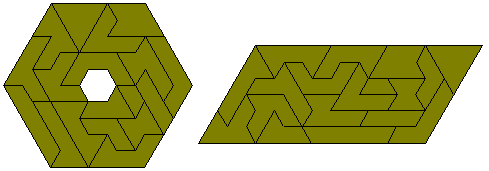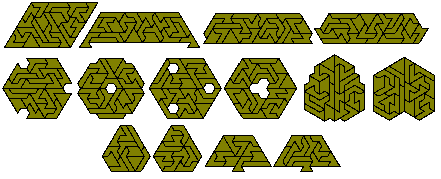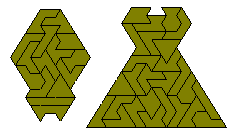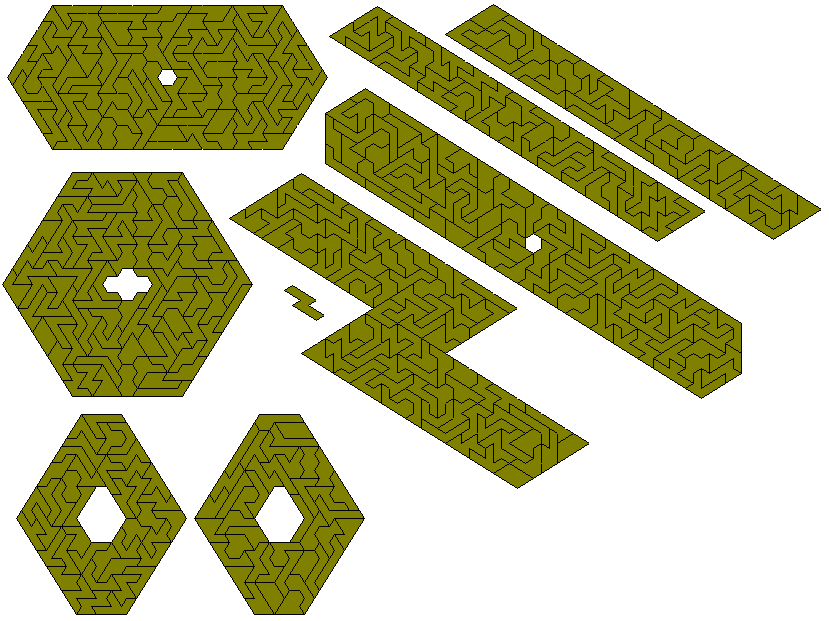Polyhes
An n-he is a shape formed from a polyhex by the removal of half of each hexagon in such a way that the remaining pieces are connected. Brendan Owen has suggested these and has produced the following table. An alternative definition would be to combine half hexagons together in an hexagonal grid. The lower line in the table below gives the numbers for these sets.

For an alternative method of joining half hexagons see Polyflaptiles. Also see Other Hexagon Based Forms
The one monohe, the four dihes and the thirteen trihes can be combined to form a triangle.
They can also form a number of other shapes as shown here.

The 13 trihes can form a number of constructions. Brendan Owen has found 1062 solutions to the figure at the left.


![]()


Isoperimetric Polyhes
There are 19 perimeter 12 polyhes.
